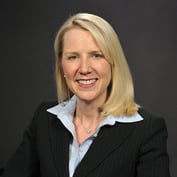Albert Einstein once reportedly said, “Only two things are infinite, the universe and human stupidity, and I’m not sure about the former.” While the great physicist’s assessment of his fellow homo sapiens is undoubtedly harsh, it is amazing how many people seem to make the same mistakes over and over again. It’s a problem that has intrigued social scientists throughout the modern era and led to a number of new fields of study. Among those has been behavioral finance, which attempts to better understand how cognitive errors and emotional biases tend to influence the decisions made by many investors. Most observers trace the origins of behavioral finance to a paper on prospect theory written in 1979 by Amos Tversky and Daniel Kahneman (winner of the 2002 Nobel Prize in economics for his work in the area). Other groundbreaking studies were conducted by academics such as Richard Thaler (University of Chicago), Robert Shiller (Yale), and Meir Statman (U.C. Santa Clara). In their wake, a large number of books and academic research papers have been written on behavioral finance. The field is extensive and we won’t be able to address all of its intricacies in one magazine article, but at its most basic, behavioral finance derives from the idea that investors engage in a number of irrational behavior patterns that can be readily identified.
As knowledge of the subject becomes more widespread, a growing number of advisors and other financial professionals have begun using those principles in their daily practices on both the individual investor level and in money management. The first is probably most crucial for advisors, and entails identifying behavior that is less than helpful to the client’s long-term financial health and taking steps to modify or avoid that behavior. The second area involves attempting to exploit behavioral mistakes made by other investors in order to reap outsized gains in the market.
As is often the case with any new area of research, there’s still a great deal of debate about the applicability of the theory. However, advisors owe it to their clients, and to themselves, to become familiar with the theories and their possible application.
“I believe that the things that the behavioral finance people have uncovered, these systematic cognitive errors that people are prone to, are real,” says David Yeske, who heads up the fee-only firm of Yeske and Company in San Francisco. “I see them in my clients every day.”
Fee-only advisor Curt Weil of Weil Capital in Palo Alto, California, discovered behavioral finance through the process of trying to best serve his clients. “My first interest in this was as an investor myself,” he explains. “I wanted to explore the wired-in errors that I’m prone to, like other humans, and to eliminate those errors to the best of my ability in managing my clients’ money. Then I started to recognize that this would be a good thing to use with clients that had made, shall we say, embarrassing errors. If I can explain to them that they made a mistake not because they’re a bad person or they’re stupid, but that we’re just wired in this fashion, it lets them off the hook. Now they can view it as a learning experience for which they’ve paid a high tuition.”
What Yeske, Weil, and other advisors who attempt to use the lessons of behavioral finance with their clients continually point out is that unlike Einstein’s assessment at the beginning of this article, the predictable errors that investors make are due to human evolution, not individual stupidity.
“The human brain is wired by millions of years of evolution not to process statistics, but for social interactions,” explains Yeske. “It doesn’t work like a computer and process a problem by going from A to B to C to D; it jumps from A to D. That works very well in our normal everyday social interactions. It doesn’t necessarily work well when we’re making financial decisions.”
Oakland, California-based fee-only advisor Pat Jennerjohn of Focused Finances echoes that sentiment when she notes, “Things that helped us out in the jungle aren’t real helpful on Wall Street.” To assist her clients in understanding that their less-than-helpful investment impulses are the result of evolutionary processes rather than personal failings, Jennerjohn insists that they each take a workshop that she conducts on the fundamentals of behavioral finance.
“We talk about heuristics, which are decisions we make quickly without any kind of linear thinking. A lot of these are hard-wired into our brains through evolution and are useful skills that have helped us become the species that we are now, but these useful skills when applied to more complex situations often lead to poor decisions. They aren’t the kinds of skills that look at many, many years of historical beta and trends. I teach them to recognize the situations where faulty thinking might come into play and then how to step away from it.”
Irrational Behavior
Just about any advisor is likely to have a wealth of stories about actions that their clients have made or wanted to make that didn’t make any objective sense and certainly would not produce the desired result. Dan Moisand of Spraker, Fitzgerald, Tamayo & Moisand, in Melbourne, Florida, has studied behavioral finance extensively and is the author of “Using Behavioral Finance to Improve Client Communication,” a paper posted on the FPA Web site (www.fpanet.org). He’s seen a number of these cognitive errors first hand.
“A real common one is confirmation bias,” he points out. “That’s a fancy way of saying that people hear what they want to hear. They’ll accept information readily if it tends to back up their [preformed] opinion, and they tend to discount or reject information that goes against their way of thinking. We have that bias in part because we get so much information every day, so much stimulus, that the brain has to have a way of sifting through it. So it takes the mental shortcut. That’s what a judgmental heuristic is–basically a mental shortcut. It’s not necessarily a bad thing because it allows us to process all this information, but it can cause us to place too much emphasis on bad information and to discount or reject good or useful information.”
“The most common mistake is to look at the immediate past and then project it into the future indefinitely,” adds Pat Jennerjohn. “If the market went down yesterday, you’re going to be a lot more pessimistic about the future than if the market went up. We also tend to be very confident and think things are more likely if we’ve had a personal experience [supporting that confidence] or if [those memories] are more vivid in our minds.” In her workshops, Jennerjohn asks clients to judge which of two unlikely causes of death is more common–being attacked by a shark or being hit by something falling from an airplane. The class almost always chooses the shark attack, although the second occurrence happens more frequently.
“That’s called salience or availability. You tend to overestimate the likelihood of something happening if you’re familiar with the occurrence. People here in California go out and buy an earthquake kit right after we’ve had an earthquake, or people go and buy lottery tickets at the store that sold a winning ticket. That kind of behavior is great if one member of your tribe has just discovered a really delicious fruit, but you can’t apply that in situations where you have to be very objective and look at long-term trends and [sometimes] go against your instincts. The thing that you ought to do right now is probably the thing you least want to do.”
A common error that Yeske has experienced is what he refers to as the representativeness heuristic, where people assume that a “good company” is a good investment. “We can demonstrate that those companies that can be identified in some objective way as good companies, as admired companies, as companies with really excellent financial ratios, tend to be really bad investments.
“Inappropriate extrapolation” is another behavioral error, says Yeske. “People tend to give too much weight to recent events when extrapolating into the future. If you have a couple of months of bad market returns, for example, people start to feel like it’s going to go on forever, and they want to turn their financial plan upside down to adapt to that. We have to keep bringing them back to the broader context and pointing out that what they’re feeling is not unnatural.”
Risk aversion is among the most common occurrences. “Risk aversion is hard-wired into our brains,” observes Shiv Mehta, head of asset allocation for ING Investment Management. “If you think about it, we are very naturally, by our evolution, risk-averse creatures. You see risk aversion in financial terms often in 401(k) plans, where people invest all of their money in stable value accounts. We probably all have more cash than we need to. Why? Because we are all more afraid of creating a situation where we have a loss. The marginal utility, if you like, of a gain is not as high as the reverse marginal utility of a loss.”
“Mental accounting is another one that you’ll come across, where people treat a pot of money differently because of what it’s for or where it came from,” notes Moisand. As an example, he points to a young worker who is afraid to take any risk in her 401(k) because that’s her retirement money. “When they’ve got 20 or more years until retirement, they could take on some risk.”
Anchoring is a behavior that Weil brings up. The example he uses is of a situation where he advises a client to sell some stock in a company where the client once worked. “They have a hard time doing that because they remember when it was $150 a share and now it’s only $70,” he says. “They’re anchored at that $150-a-share price. So I turn it around for them and say, ‘Well, then, you’re probably anxious to sell your home in Palo Alto. It’s $1.3 million now and remember, it was worth only $35,000 back in 1972, so the real value is only $35,000.’
“They’re anchored to a stock price from 1999 as the price it should be, but that has nothing to do with reality. If I can show them the reverse of that and how irrational it is, then they’re open to the fact that maybe the real value of that stock today is $70, because that’s where it’s trading.”
Behavioral Investing








 July 01, 2005 at 04:00 AM
July 01, 2005 at 04:00 AM










